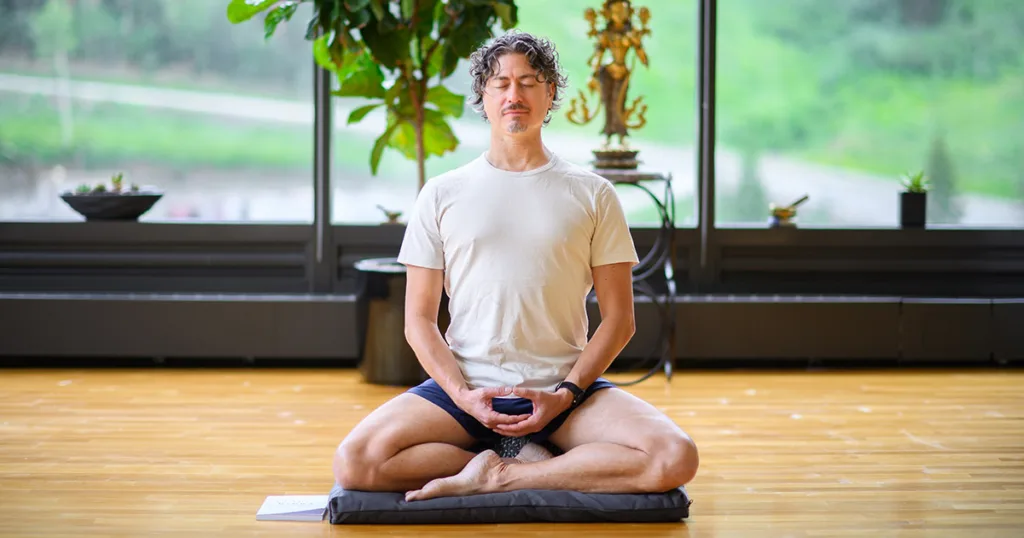
The Buddha said: “There is one thing that, when cultivated and regularly practiced, leads to deep spiritual intention, to peace, to mindfulness, and clear comprehension to vision and knowledge, to a happy life here and now, and to the culmination of wisdom. And what is that one thing? Mindfulness centered on the body.”
Most spiritual systems consider concerns of the body to be subservient to those of the mind and heart. But in the practice of mindfulness, awareness of the body is the most crucial foundation. If you want to be truly present, mindfulness of the body is essential. The body is always in the present. It can’t be otherwise. When we are awake in our bodies, we are truly in the here and now.
In the Satipatthana Sutta, the sutta on the practice of mindfulness, there are considered to be four foundations of mindfulness. I introduced these in a previous post. I consider mindfulness of the body to be the “foundation of the foundations.” This is because everything we experience in this life is experienced as sensation in the body. At any given moment, there are six things we can be aware of: seeing, hearing, smelling, tasting, feeling or touching, and thinking. All these are experienced as sensations in our bodies.
Breath Awareness: Anchoring Mindfulness of the Body
How do we practice mindfulness of the body? The foundational practice of mindfulness of the body is breath awareness. Humans breathe an average of 23,000 times a day. Our bodies do this all on their own, without our guidance or awareness. However, we can use our breathing as an anchor for our awareness.
Often, when we sit down to practice mindfulness, it can be tempting to resolve to be mindful for the entire period of practice—10, 20, 30 minutes or more. When our minds inevitably slip off into thinking, often within seconds of sitting down to practice, we can feel like giving up. Instead of committing to something that’s likely unattainable, I suggest practicing this simple, and powerful, technique:
At the beginning of each inhalation and exhalation, commit to being aware of just this inhalation, and just this exhalation. That’s it. You simply recommit to being aware of each part of the breath as it arises.
I feel fortunate to have learned this instruction early on in my practice, more than 30 years ago. I still use it, pretty much every day.
How to Practice Mindfulness of the Body and Breath
- Sit comfortably on a meditation cushion or chair.
- Close your eyes, or leave them slightly open and look at the ground a foot or two in front of you.
- Tune into your breathing, feeling it in your body.
- As you become aware of your breathing, note if there’s an area in the breathing passage where the breath feels most clear for you. This could be your nostrils, chest or abdomen. Settle your awareness there and simply feel the sensations of breathing in that area.
- Commit to staying aware of just this inhalation, and then just this exhalation.
- When your mind wanders off, which it most likely will, when you notice it, simply redirect your awareness back to your breath. You may need to do this many, many times in your practice. Each time you notice your mind has become lost, and you bring yourself back to the breath, you are slowly but surely developing a habit of being present. So don’t despair if you find your mind wandering off many times during a practice. In many ways, the practice is about noticing that your mind has become distracted, and continually corralling it back to your breath.
Refining Breath Awareness
There are several other traditional techniques that can help you refine your awareness of the breath. You can add these to your breath awareness as a way of framing your practice:
- Notice whether your inhalations and exhalations are relatively short or relatively long.
- Be aware of the beginning, middle and end of each inhalation and exhalation.
- As you inhale and exhale, make the suggestion to calm the body and calm the mind. For example you can note: inhaling-calm, exhaling-calm.
Mindfulness of the Body: A Big Subject
When I began writing this post, I intended to include all the different ways of practicing mindfulness of the body. But when I got into the weeds of it, I realized that it’s too big a subject for a single post. In future posts, we’ll explore other ways of practicing mindfulness of the body. For now, let the simple breath be your mindfulness anchor.

I’m SO happy to be reading Charlotte’s words and being a recipient of her teaching. Her blogs about SI joint issues (which I have since a car accident) have changed my life! The detail of a simple practice can make such a difference, and she acknowledges and teaches with love of details. Thank you Charolotte!
Thanks so much! I’m so glad the SI information has helped you. It has certainly made a huge difference for me as well. Thanks, Andie!